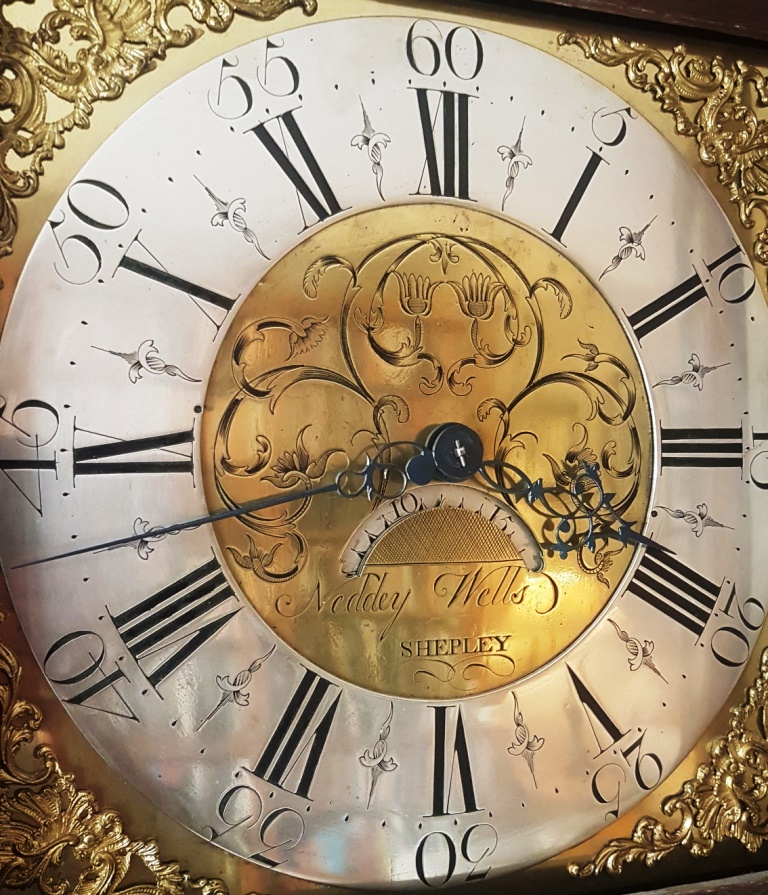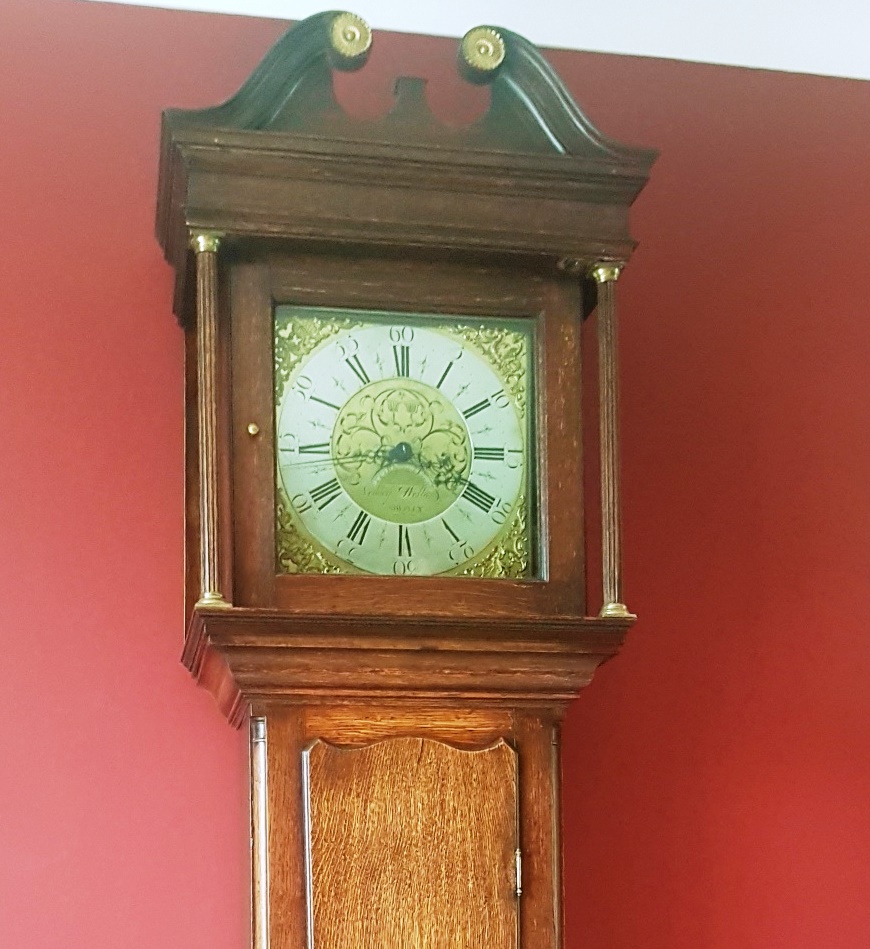
In the mid to late eighteenth century, it didn’t seem to matter too much. Neddey Wells, Neddy Wells? When it comes to a name, what is an extra or a missing ‘e’ amongst friends?
Nowadays it seems to matter almost too much. Get one digit wrong in an email address and the dreaded ‘your email did not reach some of its intended recipients’ message is only moments away from gracing your inbox. Make a mistake keying in a URL and you find yourself not immediately where you intended to be. Instead you are perhaps shepherded to safety by that watcher and manipulator of all things – Google – and asked ‘ did you mean….?’.
It still strikes me as odd though. Neddey Wells of Shepley. Here was a man who, back in the 1770s, engineered clock movements with a craftsman’s precision. As a result of his skill, clocks he made before the French Revolution and the start of the American War of Independence still work today, two and a half centuries later.
Detail matters
To the 18th century clockmaker, detail clearly mattered. A fraction of a fraction of an inch out on any component in a clock movement and the whole thing wouldn’t work.
Look at the symmetry of the clock hood with its beautifully fluted wooden pillars and its balanced broken swan neck pediment. Then look at the engravings on the face of Neddey Wells’ brass dialled clocks. They are so ornate, so beautifully wrought, so artistic. Whether he did his own engraving or bought in dials from specialists, it clearly mattered that it was right.
But seemingly it didn’t worry Neddey that his name was spelled in at least two different ways on clocks that survive to this day. Even if he couldn’t himself read, he would have been conscious, surely, of the difference between what he saw on one face and what he saw on another?
What’s in a name?
There is so much I don’t know. We know so little of the life of Neddey Wells, and what we think we know seems contradictory. That is another story entirely. But the name so often provides the starting point for finding out more.
My researches around the subject have unearthed fascinating details about members of his family and their lives but precious little about the man himself. Yet his presence is so palpable each time the clock he crafted strikes the hour with unerring reliability and its ring echoes lastingly in my home.
What I do know for certain is this. On longcase clocks, names matter.
When Frederick James Britten first published his Old Clocks and Watches and their Makers in 1894, he fulfilled that desperate yearning in clock lovers to know something more about the character behind the clocks they owned. G.H. Baillie and Brian Loomes in turn have continued the work with missionary zeal. Their books, even in this digital age of universally shared knowledge, are must-have fixtures on the clock-lovers’ bookshelves.
Transcending time
Longcase clocks exude character. They were each individually crafted by individuals whose own personalities shaped their masterpieces’ personalities. And every evening, as I pull the cord which lifts the single weight which drives the thirty hour movement which turns the hands – just as so many before me have done these past 250 years – I look the man in the face and know that, however he spells his name, his legacy transcends time.
I have a Neddy Wells 30 hour longcase clock. My father bought it in Essex around 1980. I wonder how many more there are still out there? Btw FindMyPast has a baptismal record for Neddy Wells at Kirkburton (near Shepley) in 1742
I have a neddey wells long case clock. It was my grandfathers born in 1900 and in his family before that . The family come from Shepley, my great grandfather was the headmaster of shepley school and his father was an architect there. I am looking for recommended clock repairers, it’s in beautiful condition( with chimes I think) but needs setting up and servicing. Can you help?
Wow, Karen. That’s so exciting. I’ll email you separately. Meanwhile, do look at the second blog post about Neddey Wells – a mystery, an enigma and a Yorkshire Clockmaker.
I found your article interesting. Recently I bought a Neddy Wells clock in the mountains of Tennessee. It was in a house with no electricity. The Tennessee clock dial is typical Neddy Wells, with his name and etchings. The case is elaborately carved with oak veneer and various inlay showing as vines and flowers. We are working on the movement now. Thus far we’ve found no markings on the case.
So exciting to know that there are more Neddey Wells clocks out there, as far afield as Tennessee. I’m in touch with Chuck for more information as I build a picture of the man and his work. Watch out on ‘reflections’ for future updates. And if you haven’t already read it, do go here for more information on the enigmatic Neddey Wells: